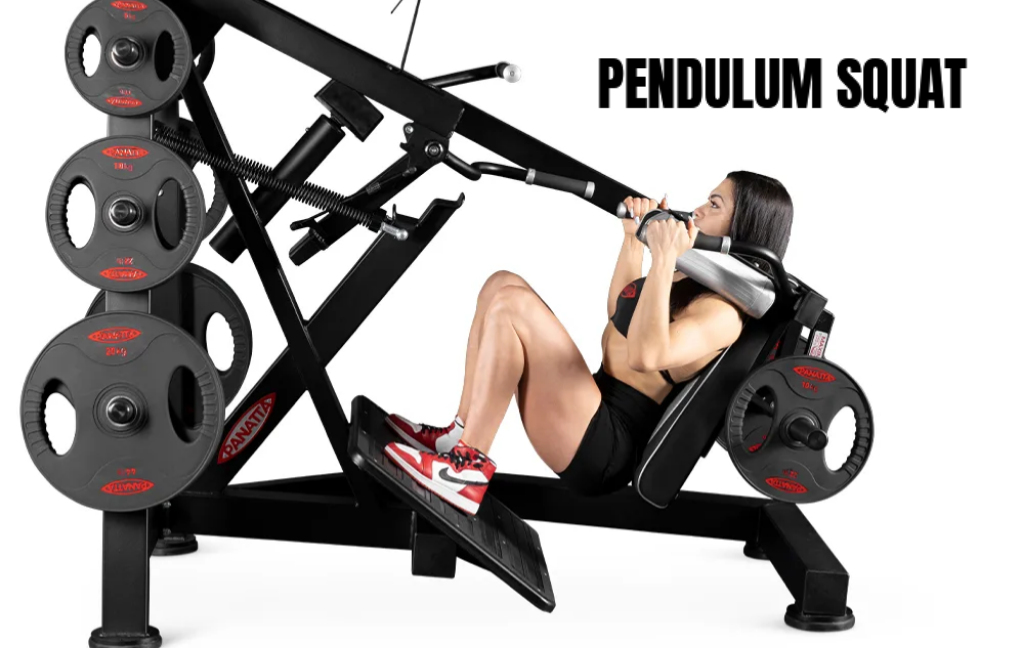Have you heard about the pendulum squat and wondered how it compares to traditional squats? Are you curious about its benefits and how to perform it correctly? In this comprehensive guide, we will explore the pendulum squat in detail, including its benefits, proper technique, and how it can enhance your lower body workout routine.
What is a Pendulum Squat?
The pendulum squat is a specialized exercise designed to target the lower body muscles, specifically the quadriceps, hamstrings, and glutes. Unlike traditional squats, which involve a vertical movement pattern, the pendulum squat utilizes a unique pendulum-like motion that allows for a more controlled and effective workout.
How Does the Pendulum Squat Differ from Traditional Squats?
- Movement Pattern: Traditional squats involve a vertical up-and-down motion. In contrast, the pendulum squat uses a backward and forward pendulum movement, which helps to increase the range of motion and engage muscles differently.
- Equipment: Pendulum squats are typically performed using a specialized machine that supports the pendulum motion, providing stability and control. Traditional squats can be performed with free weights or machines.
- Muscle Engagement: The pendulum squat focuses on a different muscle engagement due to its unique movement, potentially leading to more comprehensive muscle development in the lower body.
Benefits of the Pendulum Squat
Enhanced Muscle Activation
One of the key advantages of the pendulum squat is its ability to enhance muscle activation in the lower body. The pendulum movement allows for a greater range of motion, which can lead to increased muscle engagement in the quadriceps, hamstrings, and glutes. This improved activation can result in better muscle growth and strength development.
Improved Range of Motion
The pendulum squat machine is designed to provide a deep and controlled squat motion. This increased range of motion allows you to achieve a fuller squat compared to traditional squats, which may be limited by flexibility or mobility issues. A deeper squat can contribute to better muscle activation and overall lower body strength.
Reduced Stress on Joints
Traditional squats can sometimes place stress on the knees and lower back, especially if performed with improper form or heavy weights. The pendulum squat machine reduces this stress by providing a controlled and stable movement pattern. This makes it a suitable option for individuals who may experience joint discomfort during traditional squats.
How to Perform a Pendulum Squat
Step-by-Step Instructions
- Set Up the Machine: Adjust the pendulum squat machine to your body size. Ensure that the shoulder pads and foot platform are positioned correctly to support your movement.
- Position Yourself: Stand on the foot platform with your feet shoulder-width apart. Place your shoulders under the shoulder pads, ensuring a comfortable and secure fit.
- Engage Your Core: Before starting the movement, engage your core muscles to stabilize your body. This will help you maintain proper form throughout the exercise.
- Begin the Squat: Lower your body by bending your knees and hips, allowing the pendulum to move backward. Keep your back straight and chest up as you descend.
- Reach the Bottom Position: Continue lowering until your thighs are parallel to the floor or slightly below, depending on your flexibility and comfort level.
- Return to Starting Position: Push through your heels and extend your knees and hips to return to the starting position. Maintain control of the pendulum motion as you rise.
- Repeat: Perform the desired number of repetitions, typically ranging from 8 to 15 per set, depending on your fitness goals.
Tips for Proper Form
- Maintain a Neutral Spine: Avoid rounding or arching your back during the squat. Keep your spine neutral to prevent injury and ensure effective muscle engagement.
- Control the Movement: Perform the squat with a controlled motion, avoiding any jerky or rapid movements. This will help you maximize muscle activation and reduce the risk of injury.
- Use Appropriate Weight: Start with a lighter weight to master the form before gradually increasing the resistance. Proper technique is crucial for preventing injuries and achieving the best results.
Also read: Suwuianna: Enhancing Your Physical, Mental, and Spiritual Health
Incorporating Pendulum Squats into Your Workout Routine
Workout Structure
The pendulum squat can be incorporated into your lower body workout routine in various ways:
- As a Primary Exercise: Use the pendulum squat as the main exercise for your lower body workout, performing it early in your session when you have the most energy.
- As a Supplementary Exercise: Include the pendulum squat as a supplementary exercise after completing other lower body exercises, such as traditional squats, lunges, or leg presses.
- In Supersets or Circuits: Combine the pendulum squat with other exercises in supersets or circuits to create a challenging and effective lower body workout.
Frequency and Reps
For optimal results, aim to perform pendulum squats 2 to 3 times per week, allowing for adequate recovery between sessions. Repetition ranges can vary based on your fitness goals:
- Strength: 4 to 6 reps per set with heavier weights
- Hypertrophy: 8 to 12 reps per set with moderate weights
- Endurance: 15 or more reps per set with lighter weights
Common Mistakes to Avoid
Poor Form
Maintaining proper form is crucial for effective and safe pendulum squats. Avoid common mistakes such as rounding your back, letting your knees collapse inward, or using excessive weight that compromises your technique.
Inadequate Range of Motion
Performing shallow squats can limit the effectiveness of the exercise. Ensure that you achieve a full range of motion by lowering your body to at least parallel to the floor, if possible.
Overloading the Machine
Using too much weight on the pendulum squat machine can lead to poor form and increased risk of injury. Start with a manageable weight and gradually increase as you become more comfortable with the movement.
Conclusion
The pendulum squat is a highly effective exercise for targeting the lower body muscles, offering benefits such as enhanced muscle activation, improved range of motion, and reduced joint stress. By incorporating pendulum squats into your workout routine and performing them with proper technique, you can achieve better results and strengthen your lower body.
FAQs
1. What is a pendulum squat?
A pendulum is a lower body exercise performed on a specialized machine that uses a pendulum-like motion to target the quadriceps, hamstrings, and glutes.
2. How does the pendulum squat differ from traditional squats?
The pendulum squats involves a backward and forward motion, allowing for a deeper squat and different muscle engagement compared to the vertical movement of traditional squats.
3. What are the benefits of performing pendulum squats?
Pendulum squats offer benefits such as enhanced muscle activation, improved range of motion, and reduced stress on the joints compared to traditional squats.
4. How should I perform pendulum squats with proper form?
Maintain a neutral spine, control the movement, and use appropriate weight. Ensure that you achieve a full range of motion and avoid common mistakes such as poor form or overloading the machine.







